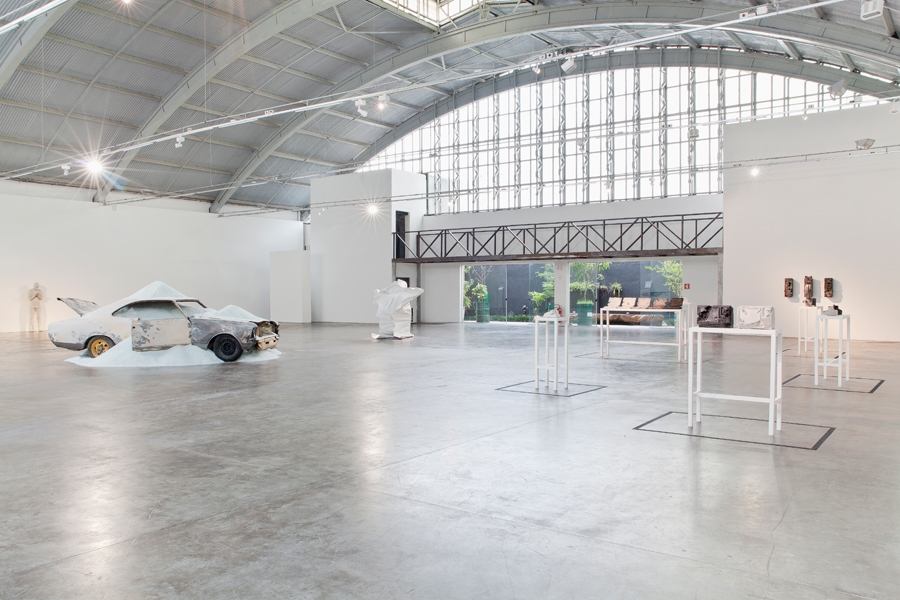It’s no simple matter to fill the cavernous Baró Galeria, a slick, 1,500sqm space on the fringe of São Paulo’s gritty Centro. In the previous exhibition held there, Argentinian artist Pablo Siquier occupied it stunningly without placing a single thing on the gallery’s expansive floor: his show consisted of three immense murals in which complex, hyperprecise computergenerated drawings were executed in charcoal by an all-too-human hand, their labyrinthine systems facing each other across the massive empty space, forcing the viewer into the role of pivot or link between them.
In the show, a ruined 1976 Chevrolet Opala has been dumped on the floor – or in the concept of Arsham’s show, ‘unearthed’ by a future archaeologist
In his first Latin American exhibition, New York artist Daniel Arsham begins with a bang: a visual pileup in the form of the site-specific Crystal Car (2014). In it, a ruined 1976 Chevrolet Opala has been dumped on the floor – or in the concept of Arsham’s show, ‘unearthed’ by a future archaeologist. Battered, bruised and with its original colour oddly indistinguishable, as if you’d gone suddenly colour-blind, the hull of the still elegant Chevy is filled to the brim and half-buried under eight tons of bluish glass pellets, of the kind used to make asphalt glint in the headlights.
Pieces of glass come together more compactly in a nearby sculpture, Focus (2013), a full-size cast of a standing Arsham in a pose somewhere between praying and intently reading his own upturned palms. The piece, rendered in bits of broken glass and resin, was apparently inspired by a hurricane Arsham experienced as a child and the memory of the smashing, falling glass; and it’s a theme of destruction, loss and catastrophe, and of the persistence of the objects around us, albeit in altered forms, that pervades this exhibition. In a set of four gouache paintings, odd architectural objects protrude from swampy, overgrown glades; and in the short film Future Relic 01 (2013), a white-robed seeker from the future traverses a series of sand dunes, unearthing artefacts from the present day. He turns a dollar coin, white and brittle like a sand dollar, in his hand; and a cellular phone of the early-1990s variety, hefty as a milk carton and white as milk, turns and falls in the air, shedding grains of glassy sand in vivid, beautifully coloured images.
This foreshadows the most compelling part of the show: a set of sculptures representing fossils found by future archaeologists. There are payphones and heavy, boxy TV sets; Polaroid cameras and radios; and, already obsolescent at less than 20 years old, a set of weighty early laptops, all rendered in a rock-hard compound of volcanic ash, glacial rock dust and Hydro-Stone gypsum cement. With a technical brilliance that Arsham also puts into practice as one half of the avant-design duo Snarkitecture, where he and Alex Mustonen create similarly moulded and eroded tables, shelves and benches, the ‘fossils’ appear to have crumbled away in patches, revealing tiny grottoes like rock formations, minutely studded with quartz crystal, fragments of obsidian, crushed glass and sand.
Like fossils, which are negative images of the original object rotted down and rendered solid again by the passing of time, these are objects that embody the present absence of the original object – the instant obsolescence of a Polaroid camera measured in geological time, for example; and the work of the artist in representing them, using matter to fill in the blanks, endlessly manifesting what has once been real.
This article was first published in the May 2014 issue
